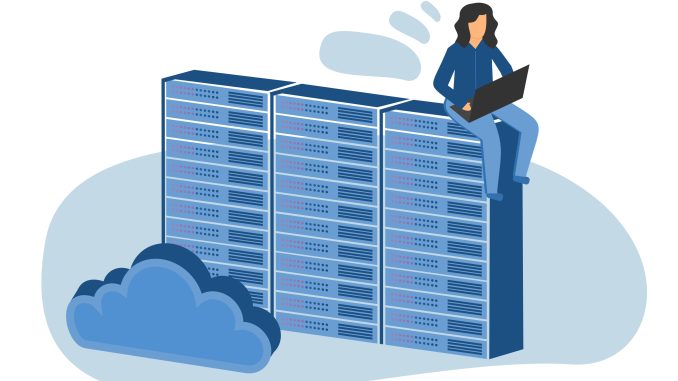
Amazon EC2 offers a variety of pricing models to cater to different needs and workloads. Here’s a breakdown of the main options:
1. On-Demand Instances:
- Pay-as-you-go: You only pay for the compute capacity you use, with no upfront costs or long-term commitments.
- Flexibility: Start and stop instances as needed, making it ideal for applications with unpredictable workloads or short-term projects.
- Highest per-hour cost: This is the most expensive option on an hourly basis, but offers maximum flexibility.
2. Reserved Instances (RIs):
- Discounted hourly rate: You commit to using instances for a 1- or 3-year term and receive a significant discount compared to On-Demand pricing.
- Predictable workloads: Best suited for applications with stable, long-term resource requirements.
- Various options: You can choose between different RI types (Standard or Convertible) and payment options (No Upfront, Partial Upfront, All Upfront) to balance cost savings and flexibility.
3. Spot Instances:
- Lowest per-hour cost: Take advantage of spare EC2 capacity at significantly discounted prices, sometimes up to 90% off On-Demand rates.
- Flexible workloads: Ideal for fault-tolerant applications, batch processing, or any workload that can handle interruptions.
- Variable pricing: Spot prices fluctuate based on supply and demand, and instances can be interrupted with a short notice.
4. Savings Plans:
- Flexible commitment: Commit to a specific amount of compute usage (measured in dollars per hour) for 1 or 3 years and receive discounted hourly rates.
- Wide applicability: Savings Plans can be applied to various instance families, regions, and operating systems, providing flexibility and cost savings.
- Two types:
- Compute Savings Plans: Offer the most flexibility, applying to any instance family, region, OS, or tenancy.
- EC2 Instance Savings Plans: Provide the highest discounts, but are specific to an instance family in a region.
5. Dedicated Hosts:
- Physical servers: You get exclusive use of physical EC2 servers, ideal for regulatory compliance or licensing requirements.
- Higher cost: Dedicated Hosts are the most expensive option, but provide isolation and control.
- Savings Plans available: You can use Dedicated Host Savings Plans to reduce the cost of your dedicated hosts.
Key Considerations:
- Workload characteristics: Analyze your application’s resource needs, traffic patterns, and fault tolerance to choose the most suitable pricing model.
- Budget: Balance cost savings with the required flexibility and commitment.
- Long-term strategy: Consider your long-term infrastructure needs and choose a pricing model that aligns with your growth plans.
By understanding the different EC2 pricing models and their trade-offs, you can optimize your cloud spending and ensure you’re getting the best value for your compute resources.
Outsourcing AWS infrastructure and application support.
Outsourcing AWS infrastructure and application support while creating your EC2 environment can lead to significant cost savings and efficiency gains. Here’s a breakdown of the key benefits:
1. Reduced Staffing Costs:
- Eliminate hiring and training: Building an in-house team for 24/7 AWS support requires significant investment in recruitment, salaries, benefits, and ongoing training. Outsourcing eliminates these costs.
- Access to specialized expertise: You gain access to a team of certified AWS professionals without having to pay for their certifications, training, or specialized skill development.
- Flexible staffing: Scale your support resources up or down as needed, without the overhead of managing a full-time staff. This is especially valuable for startups or businesses with fluctuating workloads.
2. Optimized Resource Utilization:
- Right-sizing your infrastructure: Experienced support providers can help you design and implement your EC2 environment efficiently, ensuring you’re not overspending on resources you don’t need.
- Proactive monitoring and maintenance: Outsourced teams can proactively monitor your infrastructure, identifying and resolving potential issues before they impact your business, minimizing downtime, and preventing costly outages.
- Cost optimization strategies: They can implement cost optimization strategies, such as right-sizing instances, leveraging reserved instances or savings plans, and identifying and eliminating wasted resources.
3. 24/7 Availability and Support:
- Around-the-clock coverage: Outsourcing ensures your systems are monitored and supported 24/7, providing peace of mind and minimizing the impact of any issues that may arise.
- Faster response times: Dedicated support teams can respond to incidents and requests more quickly than an in-house team that might be stretched thin.
- Reduced downtime: Proactive monitoring and rapid response times contribute to reduced downtime, minimizing lost revenue and productivity.
4. Focus on Core Business:
- Free up internal resources: Outsourcing your AWS infrastructure and application support allows your internal IT team to focus on strategic initiatives and core business activities, rather than getting bogged down in day-to-day management and troubleshooting.
- Increased productivity: By offloading routine tasks, your internal team can be more productive and contribute to higher-value projects.
5. Access to Best Practices and Tools:
- Industry expertise: Outsourced providers bring industry best practices and experience to the table, ensuring your EC2 environment is designed and managed effectively.
- Advanced tools and technologies: They have access to and expertise in using advanced monitoring, management, and automation tools, which can improve efficiency and reduce costs.
6. Predictable Costs:
- Fixed monthly fees: Many outsourced providers offer fixed monthly fees for their services, making it easier to budget for your IT support costs.
- Reduced unexpected expenses: Proactive maintenance and monitoring can help prevent unexpected issues and costly emergency repairs.
Example in EC2 Creation:
Let’s say you’re setting up a new e-commerce website on EC2. An outsourced team can:
- Help you choose the right EC2 instance types and sizes for your expected traffic.
- Configure your security groups and network ACLs to ensure security and compliance.
- Set up monitoring and alerting to track performance and identify potential issues.
- Implement automated backups and disaster recovery plans.
- Optimize your database configuration for performance and cost-effectiveness.
All of this expertise translates to a more efficient, secure, and cost-effective EC2 environment from the very beginning, saving you money and headaches down the road.
In summary, outsourcing AWS infrastructure and application support, especially during the EC2 creation phase, can be a smart move for businesses of all sizes. It allows you to leverage specialized expertise, optimize your cloud spending, and focus on your core business, ultimately leading to increased efficiency, reduced costs, and improved performance.
